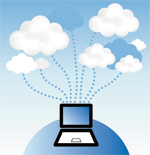FireEye's Malware Protection Systems blocks targeted attacks and provides actionable events that highlight the nature of an attack or callback.
McAfee Inc. recently announced the McAfee Security Certification Program. This global program consists of two tracks.

'Federalizing' workforce part of IT transformation program.
- By Alice Lipowicz
- Jan 17, 2011
Despite new security risks posed by a rapidly evolving technology environment, most companies continue to rely on the traditional username and password sign-on to verify a user’s identity. And according to a December commissioned study by Forrester Consulting, who surveyed 306 enterprises with 1,000 to 20,000+ employees on behalf of Symantec Corp., those organizations are unnecessarily leaving themselves open to unauthorized access by hackers and e-criminals.
IT security and data protection firm Sophos has published the latest ‘Dirty Dozen’ of spam-relaying countries, covering the fourth quarter of 2010. The United States increased its lead at the top spot, and continues to be responsible for nearly one in five junk e-mails -- 18.83 percent of all spam messages.
Unisys Corp. recently announced its technology predictions for 2011. Over the next year, Unisys predicts, six disruptive technology trends that are reshaping the IT industry will move into greater everyday use in the enterprise as organizations seek practical ways to make their end users more productive and their mission-critical systems more secure and cost-efficient.
For years, organizations have relied primarily on username and password mechanisms to control access to data, networks, and applications. Recent studies suggest this approach is no longer tenable. The Verizon Business 2010 Data Breach Investigations Report found almost 50 percent of network breeches exploited stolen or weak credentials. A Price Waterhouse Coopers study showed 92 percent of firms surveyed had experienced a malicious security breech in 2009, with the average cost for large firms ranging from $440,000 to more than $1 million. Business 2.0 is good for hackers, too it seems
- By Chris Harget
- Jan 10, 2011
SonicWALL, Inc. recently released its end-of-year summary of cybersecurity intelligence. The report reveals global trends in potentially threatening network activity and application usage.
Two new draft publications from the National Institute of Standards and Technology (NIST) provide the groundwork for a three-tiered risk-management approach that encompasses computer security risk planning from the highest levels of management to the level of individual systems. The draft documents have been released for public comment.
Cybersecurity solutions provider Sourcefire Inc. has acquired Immunet, a provider of advanced, cloud-based anti-malware technologies. The acquisition expands Sourcefire’s security solutions portfolio, adding an advanced cloud platform for delivery of malware protection.
Absolute Software recently announced survey findings that highlight top consumer security concerns and the impact that those issues have on the decision to purchase laptops, mobile devices and associated protection solutions.
PandaLabs, the antimalware laboratory of Panda Securityhas released its 2010 Annual Security Report, which details an extremely interesting year of cybercrime, cyberwar and cyberactivism.
Dell has signed a definitive agreement to acquire SecureWorks Inc., a provider of information-security services.
Most federal employees go beyond baseline IT security requirements, according to a new survey by the Government Business Council and CDW Government LLC (CDW-G).
CDW LLC (CDW) recently released the findings of its Client Virtualization Straw Poll. The report finds that 90 percent of medium and large businesses are considering or implementing at least one form of client virtualization. Driven by the promise of reduced costs and improved operation efficiency, 91 percent of that group plan to implement a client virtualization solution within the next 12-24 months.

Nearly every day, a new report or headline touts the latest cloud computing security scare. Take these recent news bits: only 47 percent of respondents believe cloud services are evaluated for security before deployment; 60 percent of 1,600 senior executives in 56 countries perceive an increase in risk from the use of cloud computing and 48.1 percent said they are not confident a compliance audit of their cloud-based apps would show that all user access is appropriate.
- By Margaret Dawson
- Jan 03, 2011
PandaLabs, Panda Security's anti-malware laboratory, close 2010 with a look at some of the unique and noteworthy viruses that have appeared over the last twelve months. The list of viruses is vast and varied, since in 2010, PandaLabs received more than 20 million new strains of malware.

As retailers and those in the services sectors know, customer loyalty has its limits. One of those limits -- apparently for just about everybody -- is the mismanagement of personal data security. According to a recent telephone survey conducted by Harris Interactive on behalf of Cintas Corp., 91 percent of U.S. adults would not return to a business if their personal information was stolen.
- By Ronnie Rittenberry
- Jan 03, 2011
The spyware pioneer lists five top threats that Internet users should be aware of as cyber criminals adapt their tactics.
SonicWALL Inc., a provider of intelligent network security and data protection solutions, announced that it has been positioned in the "Visionaries" quadrant of the December 2010 Magic Quadrant for SSL VPNs by Gartner Inc.